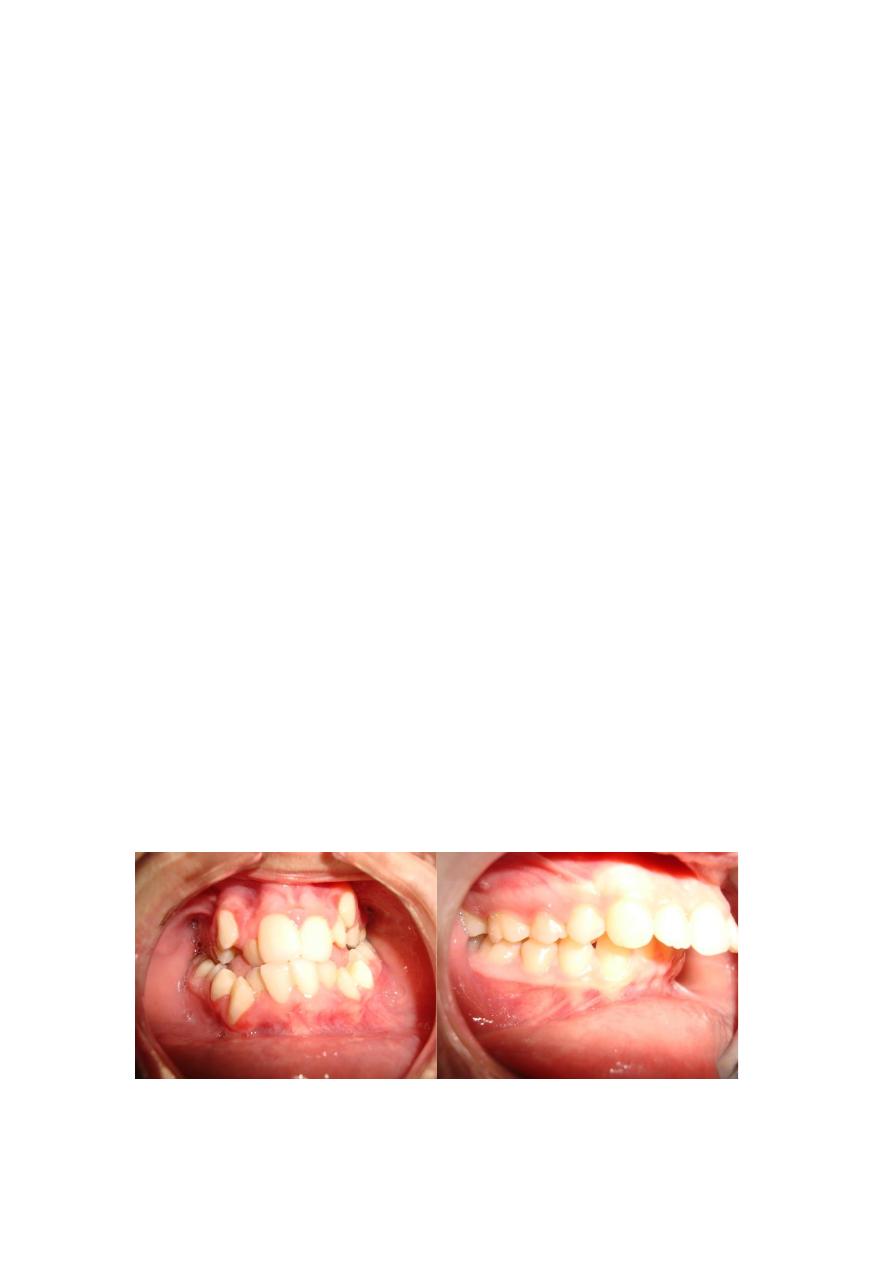
Creating space for desired tooth movement
Creating space to facilitate tooth movement is one of the basic principles of
orthodontics. Space creation in a dental arch may be required to correct certain
features of a malocclusion such as crowding, overjet reduction, levelling of the curve
of Spee or correction of incisor inclination and angulation. This space may be created
by a number of means including the extraction of dental units, extra-oral traction,
inter-dental stripping, and arch expansion.
The various methods of gaining space include:
1. Interproximal stripping
2. Arch expansion
3. Distalization of molars
4. Uprighting of tilted teeth
5. Derotation of posterior teeth
6. Proclination of anterior teeth
7. Extraction
8. Functional appliances
9. Combination of means
1. Extractions
Before planning the extraction of any permanent tooth it is important to ensure that
all remaining teeth are present and developing in a satisfactory position.Extraction of
teeth is required to provide space for either relief of crowding and / or to camouflage a
class II or class III skeletal discrepancy. In general, to preserve symmetry, teeth are
usually extracted on either side of the same arch. The decision to extract teeth is
governed by:
• general factors
— profile considerations
— incisor relationship
— appliance to be employed
— anchorage requirements
• local factors
— the condition of the teeth
— the site of crowding
— the degree of crowding
— the position of individual teeth.
Extraction for relief of crowding Extraction for camouflage of cl.II skeletal
discrepancy
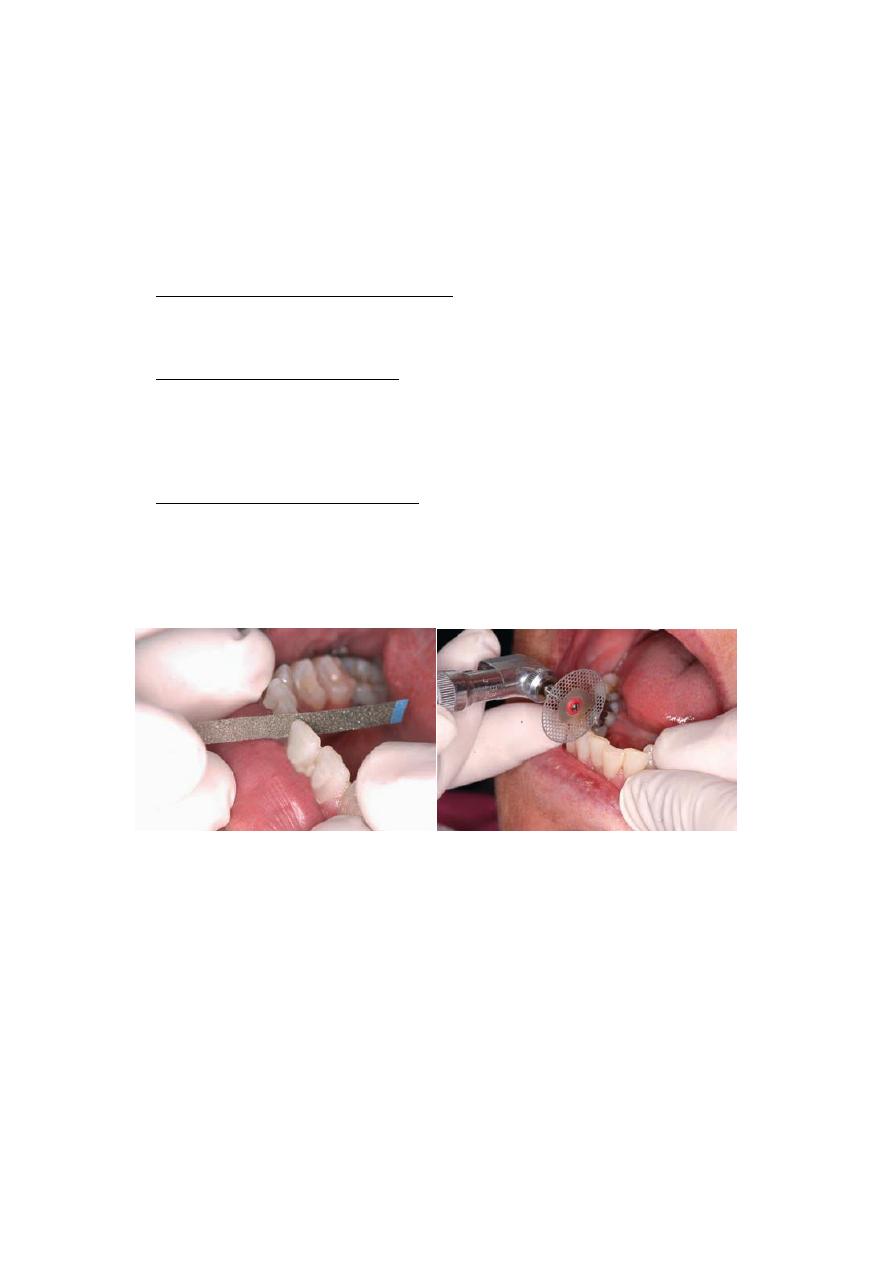
2. Interproximal stripping
Removal of 0.25 mm of enamel from each proximal surface of the incisors and
canines creates 3 mm of space forrelief of crowding, but should only be considered in
the adult. There are general roles regarding stripping:
1. Do not create too much space.
2. Perform stripping procedures slowly.
3. removing only minimal amounts of enamel needed for the tooth movement
Contraindications for proximal stripping:
1. Patients who are susceptible to caries.
2. Proximal stripping is avoided in young individuals their teeth may possess
large pulp chambers.
Advantages of proximal stripping
1. Itmay be possible to avoid extractions in borderline cases where space
requirements are minimal.
2. Broad contacts may add to stability of results.
3. Localized malalignments can be corrected without involving too many teeth,
especially in adult patients.
Disadvantages of proximal stripping
1. Sensitivity is most frequently seen following the procedure.
2. The roughened surface of enamel increases caries susceptibility.
3. Difficult to reproduce exact morphology of the tooth. This is especially true in
case of maxillary anterior teeth. The shape created may not be as esthetic.
4. Loss of proximal contacts may result in food lodgment.
Diamond strip Abrasive disc
3. Arch expansion
The expansion of the arch has been one of the oldestmeans of creating space in the
dental arches. In the upper arch, treatment of a unilateral crossbite with displacement
may provide up to 5 mm of space andobviate the need for extractions. In the absence
of such a crossbite, arch expansion is unlikely to be stable.Correction of a lingual
crossbite by lower arch expansion is possible in some cases but requires specialist
skills. Expansion devices can be classified as:
• Rapid maxillary expansion devices(RME).e.g. Hyrax type
• Slow expansion devices
.
e.g. Screw appliance andQuad-helixappliance
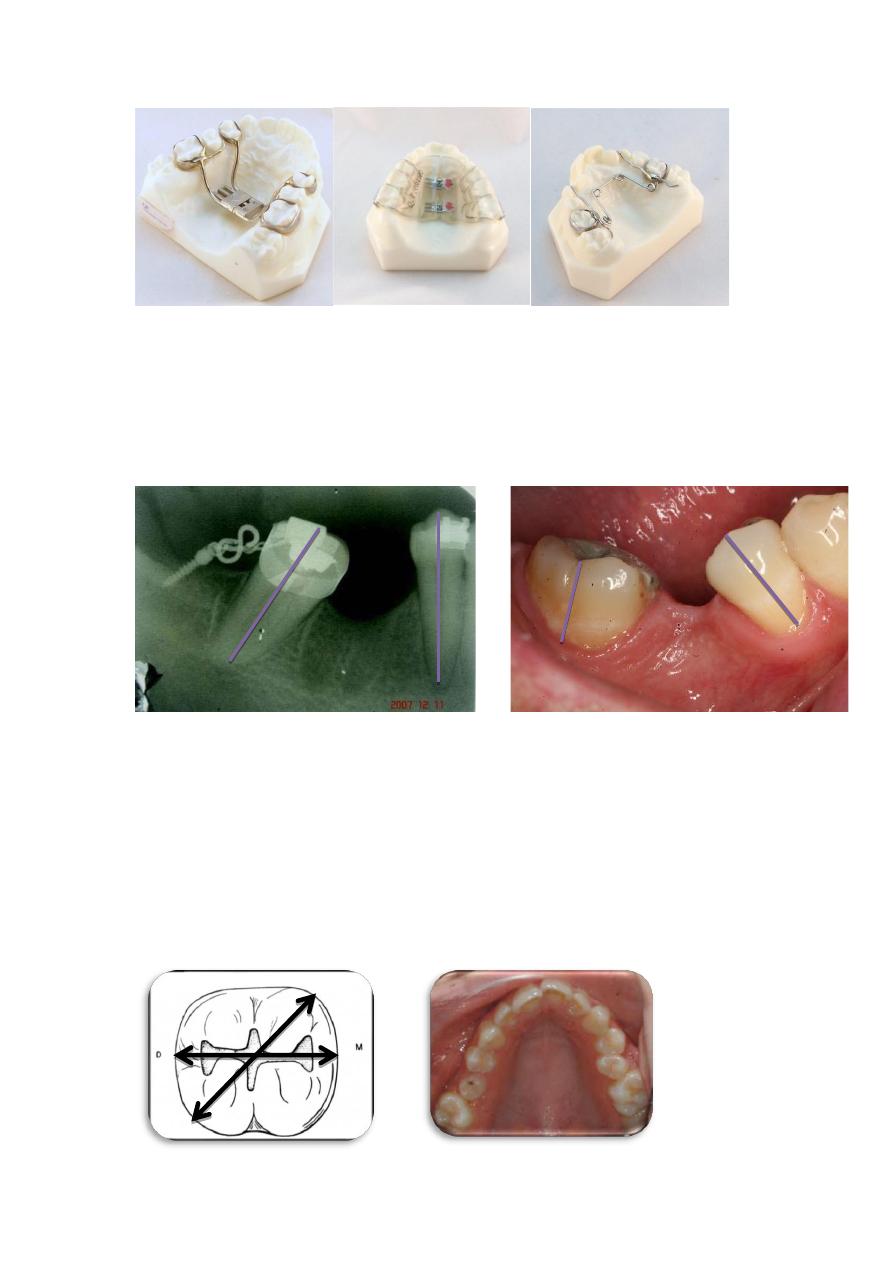
Hyrax type appliance Screw appliance Quad-helix appliance
4. Uprighting of tilted teeth
Tilted posterior teeth always occupy more space. Uprighting of molars can lead to
an arch lengthgain of 1-1.5 mm. Fixed appliances are ideally usedfor the purpose.
Space regainers or the various screwappliances are also used frequently. The lip
bumperand its modifications can also achieve good results.
5. Derotation of posterior teeth
Rotated posterior teeth occupy more space Derotation of these teeth can help
regain this space.The space regained varies upon the tooth concernedand the extent of
rotation. For a similar degree of rotation,the molars occupy more space as compared
to prernolars: whereas rotated anterior teeth occupy lessspace. Derotation can be best
achieved using a couple(forces equal in magnitude but opposite in direction)on the
lingual and buccal surfaces of the tooth. Derotation springs are usually not effective
for derotating posterior teeth. Any fixed appliance systemwith a two point contact has
more efficient rotationcontrol
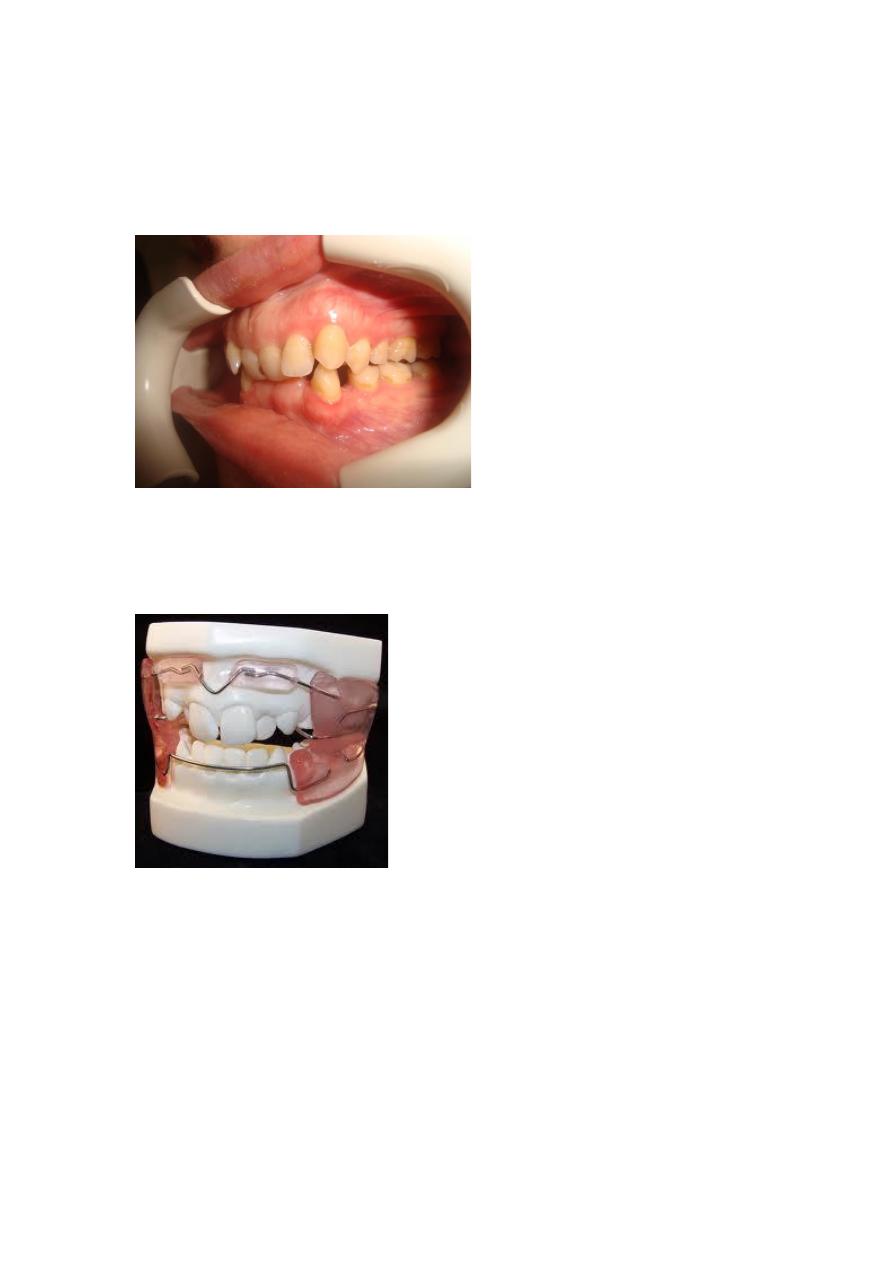
Proclination of anterior teeth
Proclinalion of anterior teeth can be undertaken incases where these teeth are
retroclined or their proclination will not affect the soft tissue profile of thepatient
adversely or the stability of the resultsachieved. Any of the proclining springs ('Z'
spring, mattress spring, etc.) or screws (medium-, mini-, ormicro-screws) or fixed
appliances can beused for the purpose.
Proclining anterior teeth will give space to relief crowding
7. Functional appliances
Some slight increase in arch dimensions may be possible in growing patients
treated with a Frankel appliance, providing space to relieve mild potential crowding
.
8. Distalization of molar teeth
Basically the procedures involved have one purpose, i.e. to push the maxillary
and/or mandibular terminal molars posteriorly. This increases the arch length by the
same length as the amount of distalization achieved. The distalization procedures are
usually undertakenbefore the eruption of the second permanentmolars. It is definitely
much easier to move one molardistally as compared to two (i.e., first and second
permanent molars). The appliances used for thepurpose of distalization of molars can
be classified as:
• Extra oral distalizing appliances. e.g. headgears with facebow or J-hook.
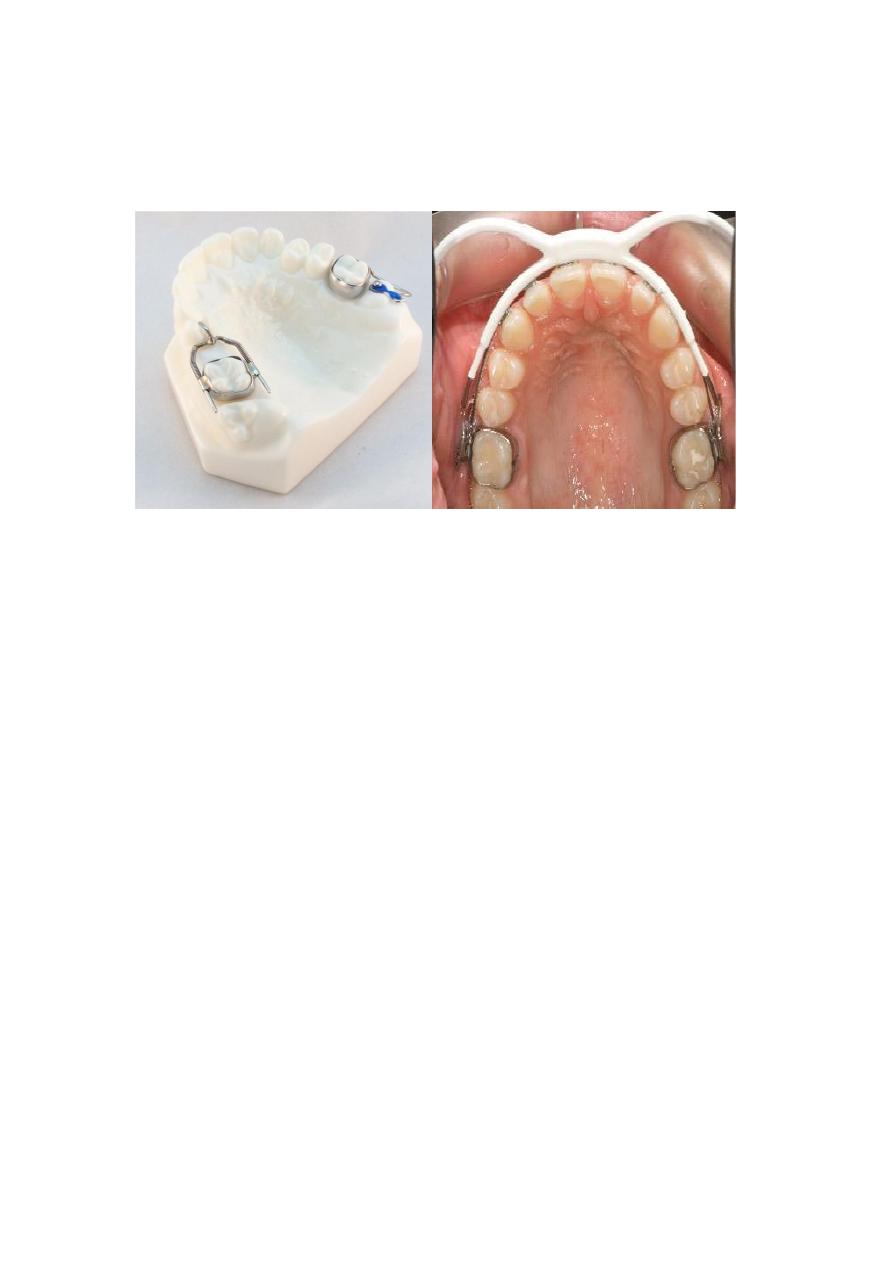
• Intraoral distalizing appliances. e.g.Lip bumper, Open coil springs and Jasper
jumper.
• Orthodontic miniscrews (microimplants)
Open coil springs headgear with facebow
9. Combination of means
In some circumstances, a combination of any or all of the methods listed may be
appropriate to create space.



